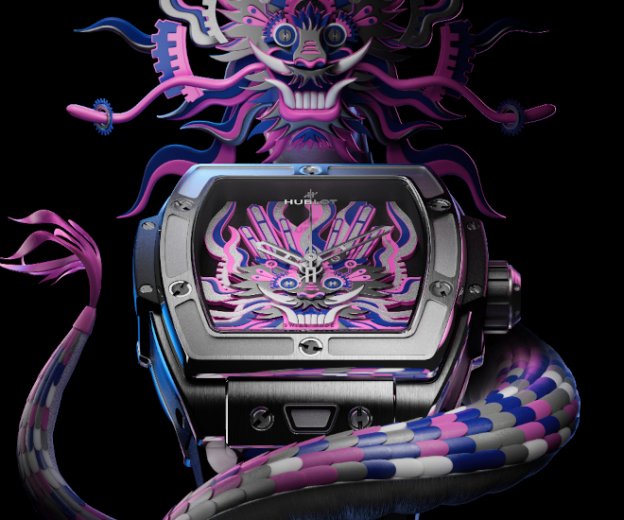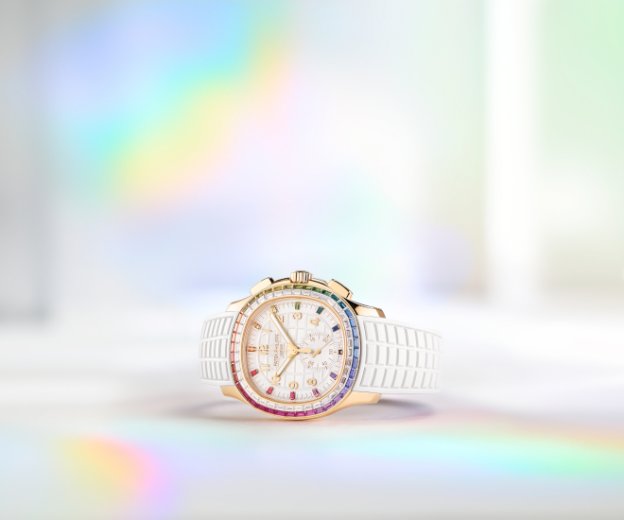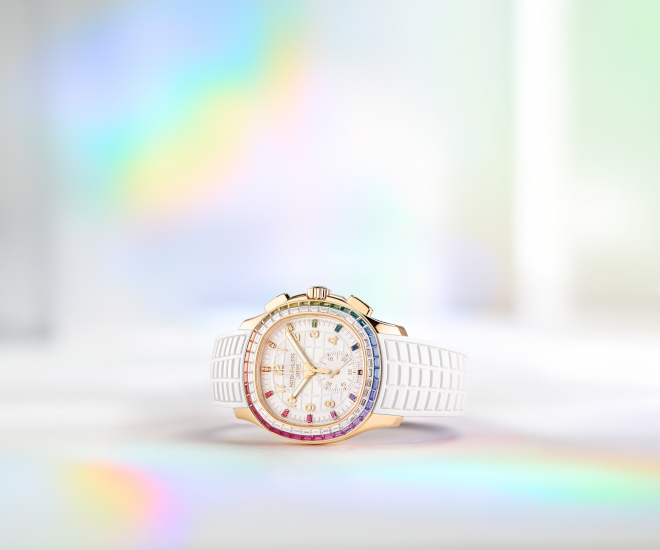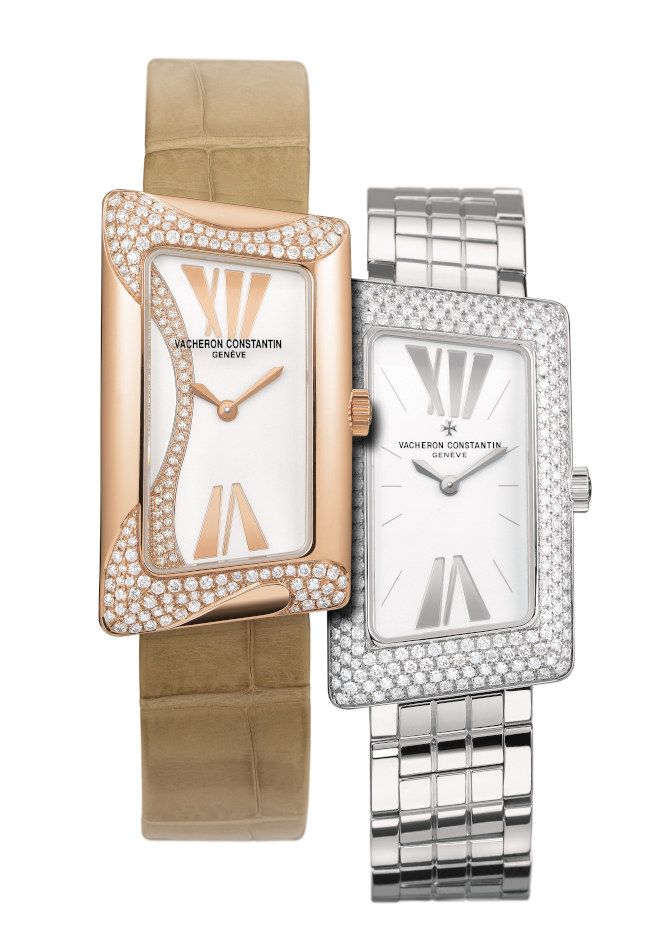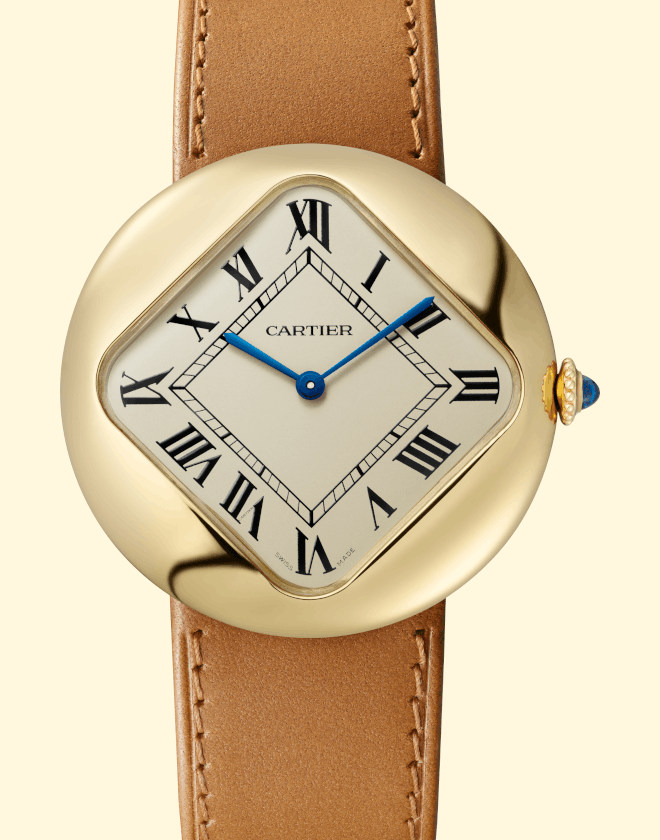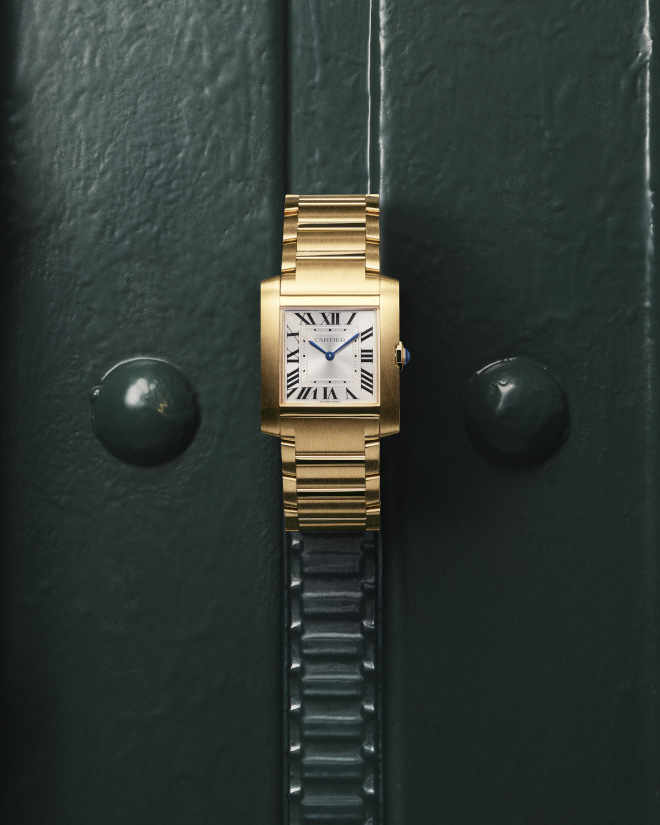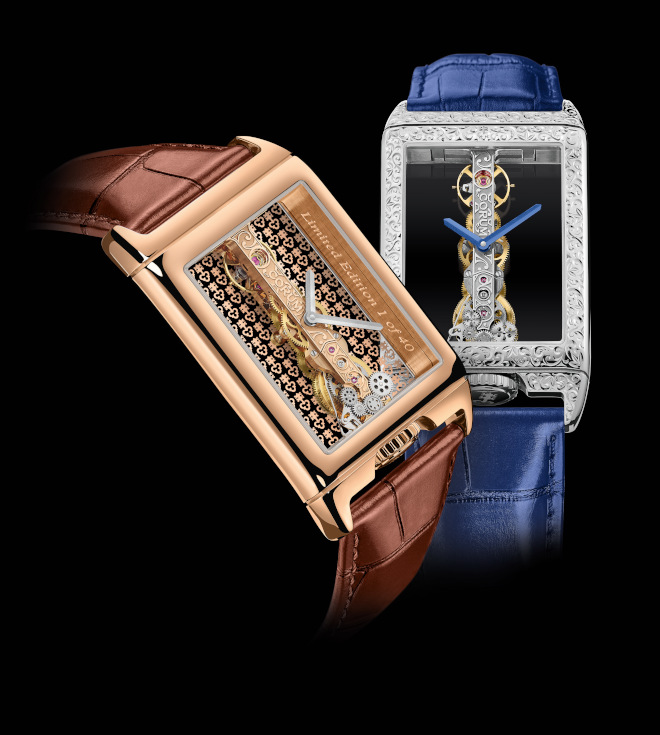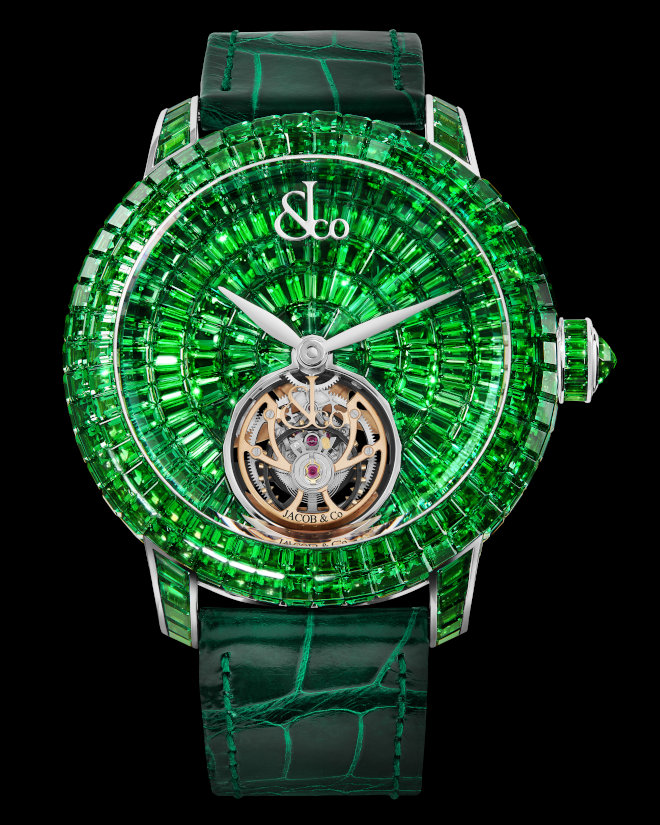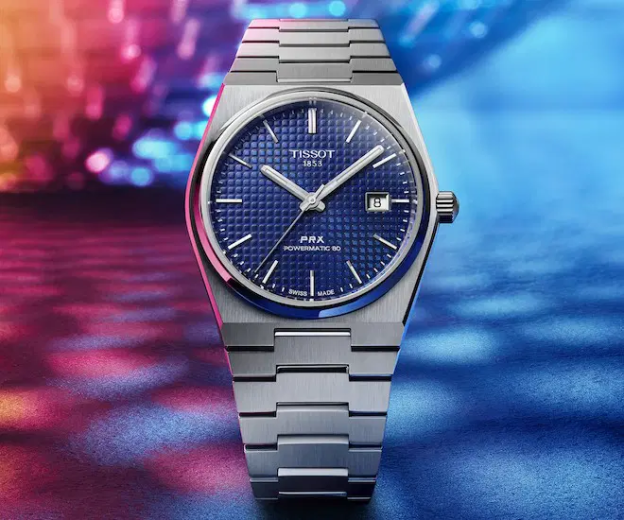
2024 marks the return of the Year of the Dragon. Returning once every 12 years, this celestial creature is associated with prosperity and is a symbol of luck, strength and wisdom. The dragon is also an imperial icon that embodies life and immortality. In honour of this auspicious creature, LUXUO lists the exclusive festive releases and dynamic timepieces to usher in the Year of the Dragon — from dragon motifs to dragon figurines and every scale inbetween.
Vacheron Constantin
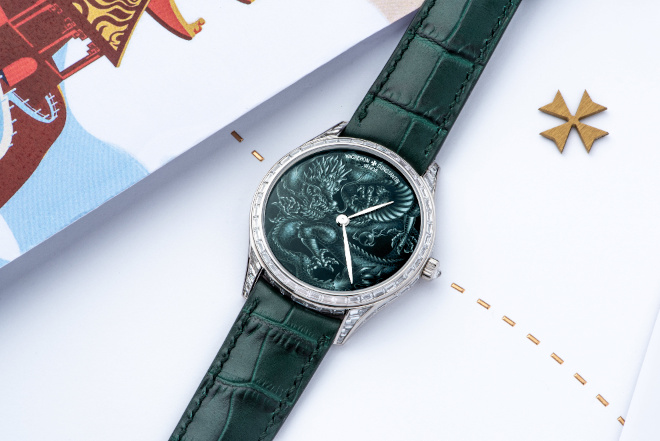
The Grisaille High Jewellery Dragon’s grisaille enamelling technique is objectively rare, and is a first for Vacheron Constantin in this shade of green. Note the 146 baguette-cut diamonds on the bezel and case of the 40 mm white gold watch, which take nothing away from the subtlety at the heart of this unique piece. Absent even a seconds indicator, it might be the most restrained watch on this list…
Ulysse Nardin

To celebrate the Lunar New Year, Ulysse Nardin combines the majestic dragon with the alluring pearl. The Ulysse Nardin Blast Tourbillon Dragon is an embodiment of in-house innovations, métiers d’art and the magic of the Year of the Dragon. This limited edition timepiece is crafted from 5N rose gold with black DLC-coated titanium sections. The two-dimensional enamel dial features an intricate red gold dragon extending across the dial towards a pearl sculpture. The case back’s “X” shape is a signature of the watch and has become a notable feature of the modern Ulysse Nardin.
Piaget
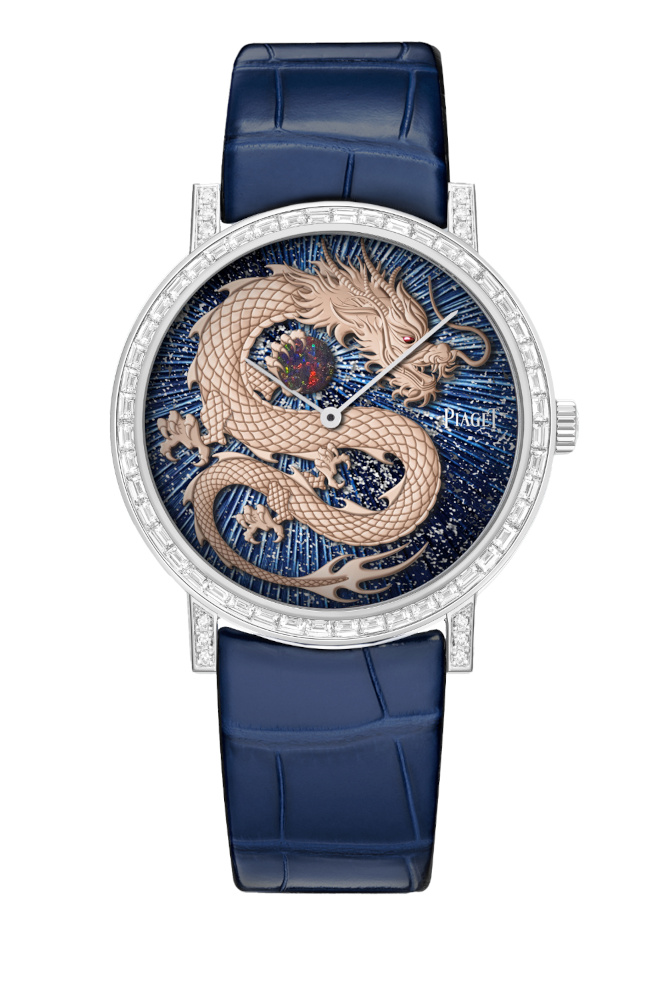
Piaget’s new Dragon & Phoenix capsule collection features 10 daring designs of exceptional watches and High Jewellery pieces – topped off with a pair of extravagantly exclusive, made-to-order high jewellery cuff watches. Each creation brims with emotion and exuberance, joyfully channelling the codes of the Maison while celebrating the house’s unparalleled watchmaking savoir-faire. In the example seen here, the dial features the fine paillonne enamel craftwork of the famed Anita Porchet, framing a engraved gold dragon.
Chopard
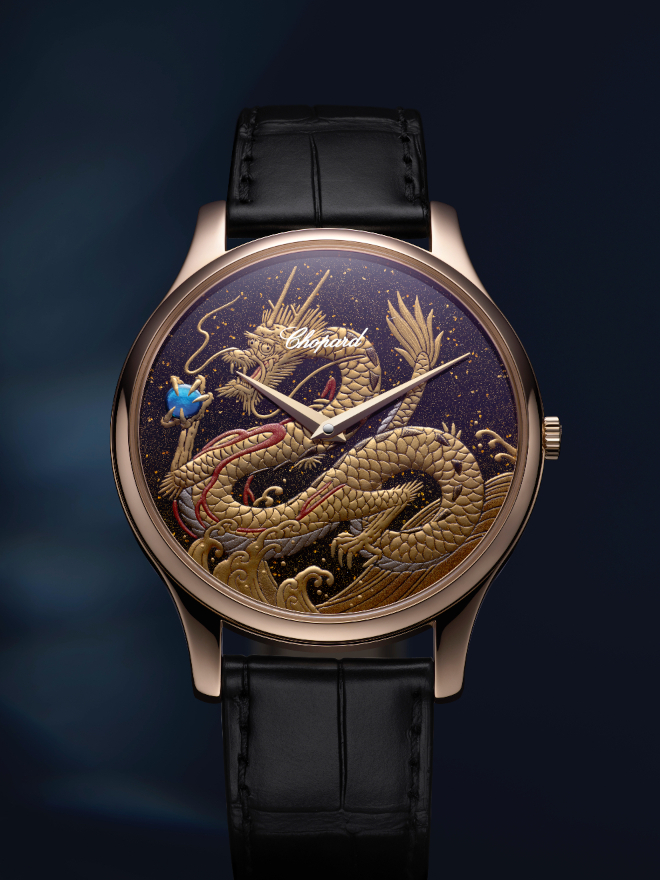
Chopard’s L.U.C XP Urushi Year of the Dragon is an 88-piece limited edition in ethical rose gold and boasts a continuation of the brand’s exploration of the traditional Japanese urushi craft; the dial was crafted by a Japanese Maki-e master using urushi lacquer, gold powder and mother-of-pearl inlays. The in-house L.U.C 96.17-L calibre with micro-rotor ensures that a slender profile of just 6.80 mm can be maintained. It mingles technical savoir-faire and artistic flair delivered by Chopard Manufacture.
Breguet
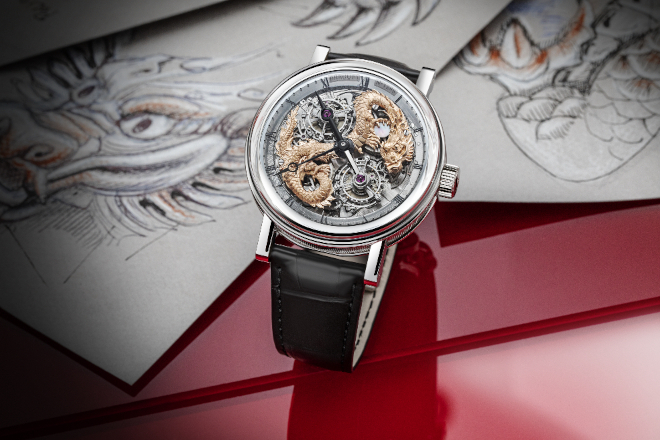
Classique Double Tourbillon Dragon 5345 (Special edition)
Breguet unveils two new exceptional timepieces as a tribute to the emblematic Year of the Dragon. The first is the special edition Classique Double Tourbillon Dragon 5345, which sees a hand-engraved golden dragon twirl between the watch’s twin tourbillons. The dragon is seen clutching a pearl made of mother-of-pearl in its talons. The rhodiumised gold rotating plate is hand-guillochéd with a fan motif. The gold bridge below the mainplate features an anthracite galvanic treatment and Clous de Paris hobnail motif guilloché.
Next is the Classique Dragon 7145 which features a hand-engraved rose gold appliqué dragon standing triumphantly on the dial with the watches Roman numerals, minutes track and clouds finished in a golden powder-pink hue. The manufacture calibre 502.3 beats inside a 40 mm rose gold case which is one of Breguet’s thinnest at just 2.40 mm thick.

Classique Dragon 7145 (Eight Piece numbered limited edition)
Hublot

Drawing inspiration from the traditional Chinese art of paper cutting, the Spirit of Big Bang Titanium Dragon layers its hands, wheels and H-shaped screws to form a 3D silhouette of an eastern dragon. It is a formidable expression of creativity that bridges form and function. Created in collaboration with the Chinese artist Chen Fenwan, this limited edition timepiece of 88 pieces is the perfect fusion of tradition and modernity, combining metaphors and symbols in the spirit of Hublot.
Bovet
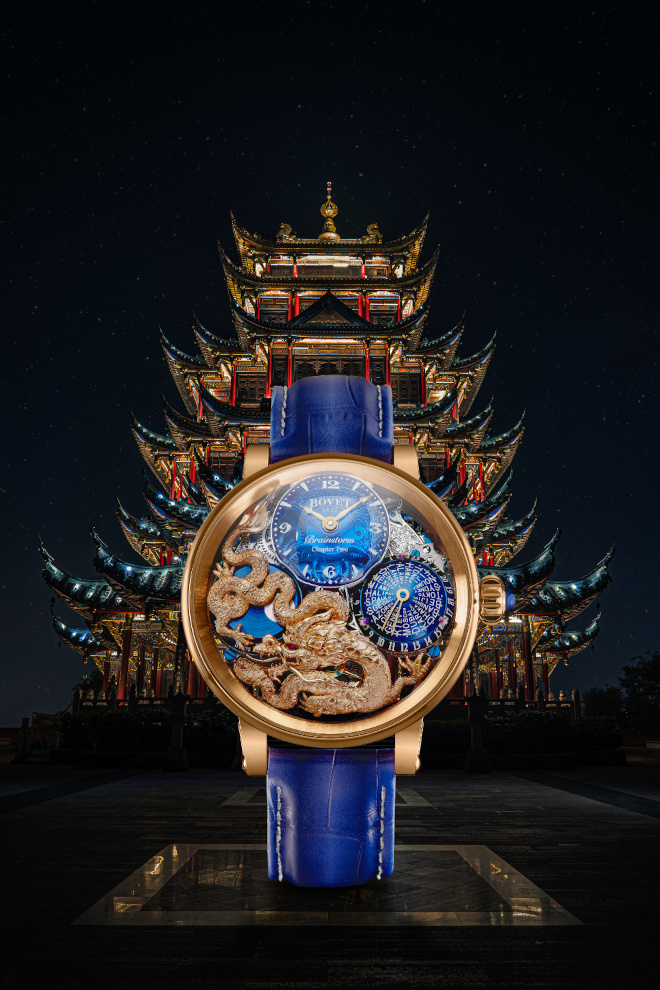
Bovet’s artisans combined the art of sculpting miniatures with its established mastery of high horology in the Recital 26 Chapter Two Dragon. The result is a hand-engraved horological objet dárt. A domed blue quartz dial displays the local time zone’s hours and minutes in the upper part of the case. The dome located at 3 o’clock displays a second time zone specifically developed for this timepiece and patented by Bovet.
Roger Dubuis
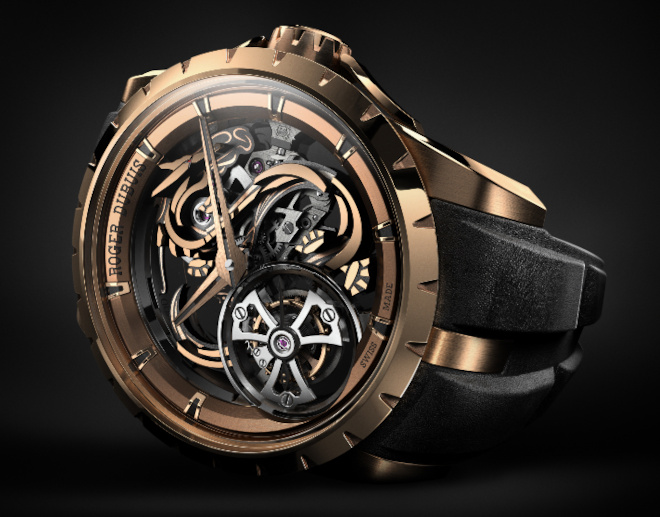
Roger Dubuis utilised the Year of the Dragon to introduce the Excalibur Dragon Monotourbillon. The timepiece’s watchmaking innovation highlights the dance, complexity, artistry, and symbolism of the festive season all in one. For the sculpture of the dragon, the watchmakers have used 27 individual pieces of brass – each embellished with black lacquer on the sides and a pink gold treatment on the polished top surface. The pieces are then set on 25 different levels, producing a mutli-dimensional vision that is full of volume and vitality, thus enriching the skeletonised movement.
IWC Schaffhausen
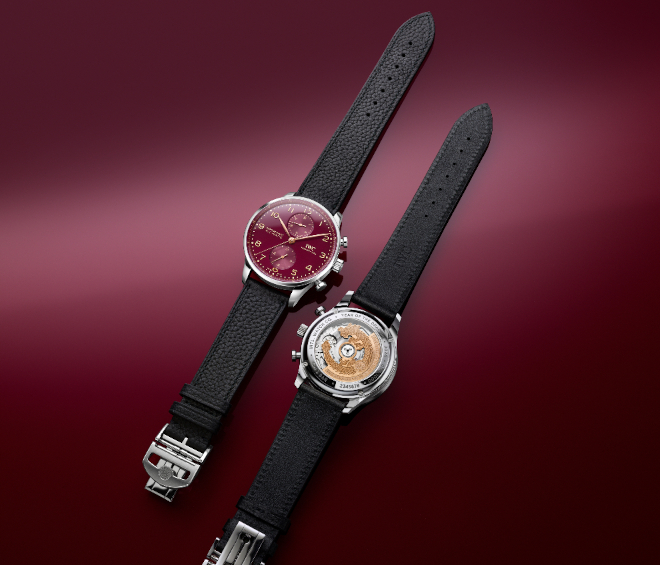
IWC Schaffhausen welcomes the Lunar New Year with a special edition release of the Portugieser Chronograph. This timepiece features a 41 mm stainless steel case, a burgundy dial and contrasting gold-plated hands and appliques. Limited to 1,000 pieces, this watch features its rotor in the form of a majestic dragon, visible through the sapphire crystal case back. The watch is powered by the manufacture 69355 calibre.
Bell & Ross
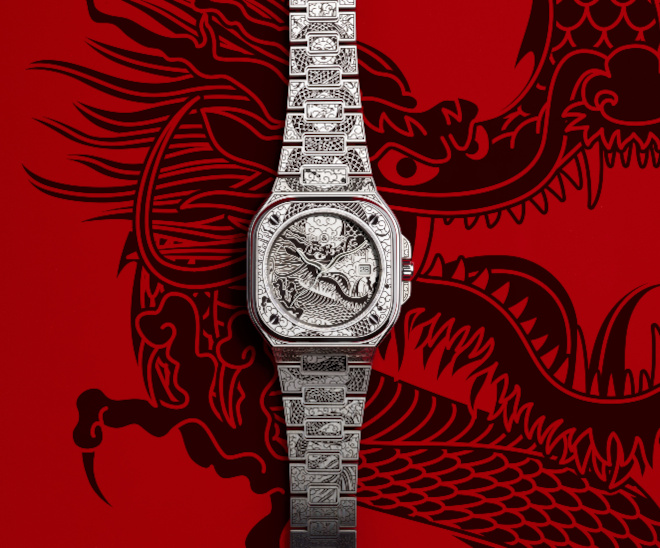
Envoking tattoo artistry, the BR 05 Artline Dragon watch takes on this bold personality, with its own exclusive laser engraving. By adopting this graphic code, the timepiece visually plays on light and shadow through the relative fineness and thickness of each stroke honing in on the precision of line work that is crucial to “transcending the realm of drawing to that of a metal tattoo”. On the BR 05 Artline Dragon’s dial and integrated bracelet, the decorative motif is finely engraved.
Jaeger-LeCoultre
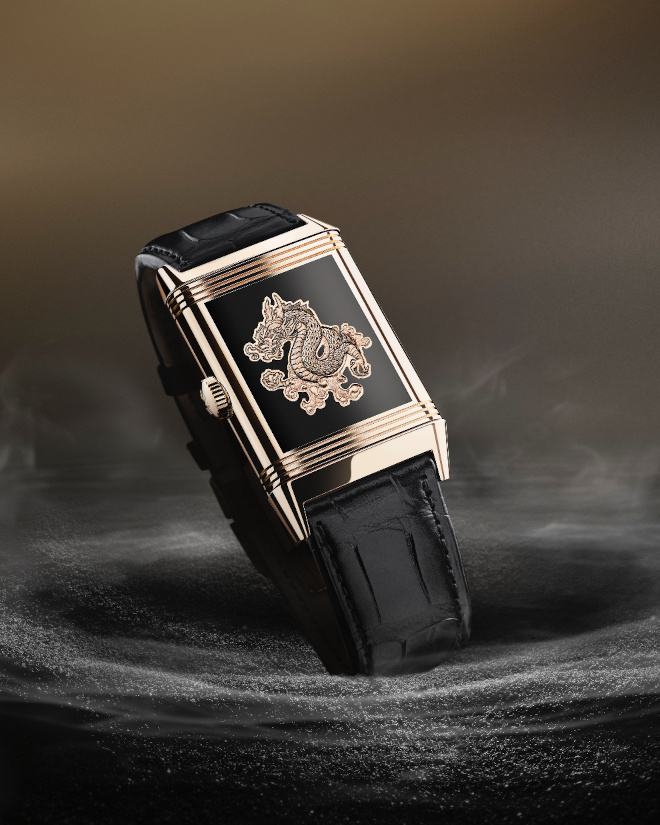
Jaeger-LeCoultre adds a new chapter to this story of craftsmanship and artistry with the Reverso Tribute Enamel ‘Dragon’. The new timepiece pays tribute to the Year of the Dragon, and to the talents of the master enamellers and engravers in the Métiers Rares atelier of the Manufacture Jaeger-LeCoultre. Created to celebrate the Zodiac Year and made only to order, the Reverso Tribute Enamel ‘Dragon’ is testament to La Grande Maison’s vision of culture and creativity, where the artistic crafts merge with the technical expertise of the watchmakers.
Blancpain
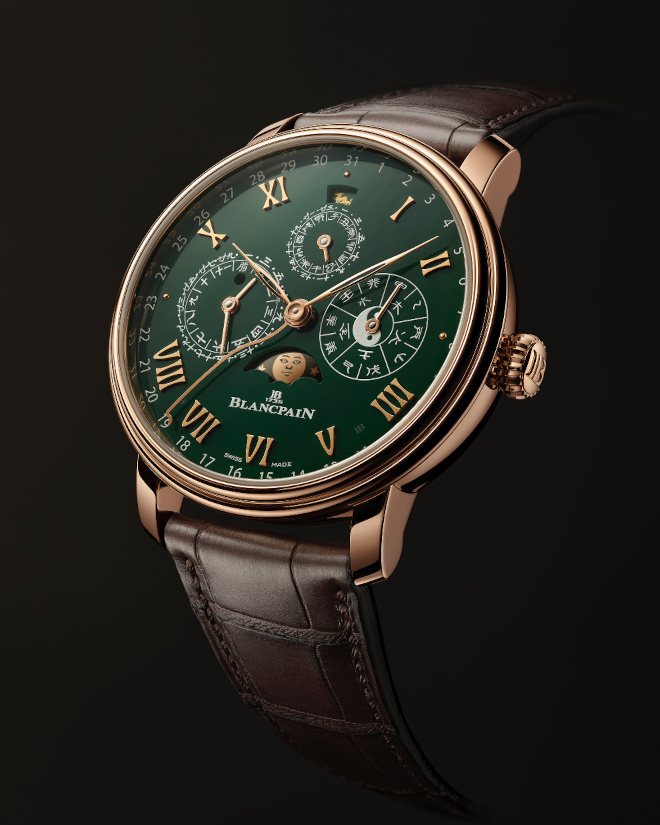
In 2012, Blancpain achieved a world-first when it debuted its Villeret Traditional Chinese Calendar wristwatch that spanned East-West with its combination of a complex Chinese calendar and a Gregorian date and moonphase. This year, the Manufacture enters its second 12-year cycle with the introduction of a new limited edition of this grand complication featuring a dragon engraved on the red gold winding rotor in honor of the symbol of the new lunar year. This special limited edition for the first time is executed in red gold with a green enamel dial against a frosted background; the dragon is flanked by a red ruby and a Chinese character engraving of the words “dragon” and “wood”, the element of 2024.
Franck Muller
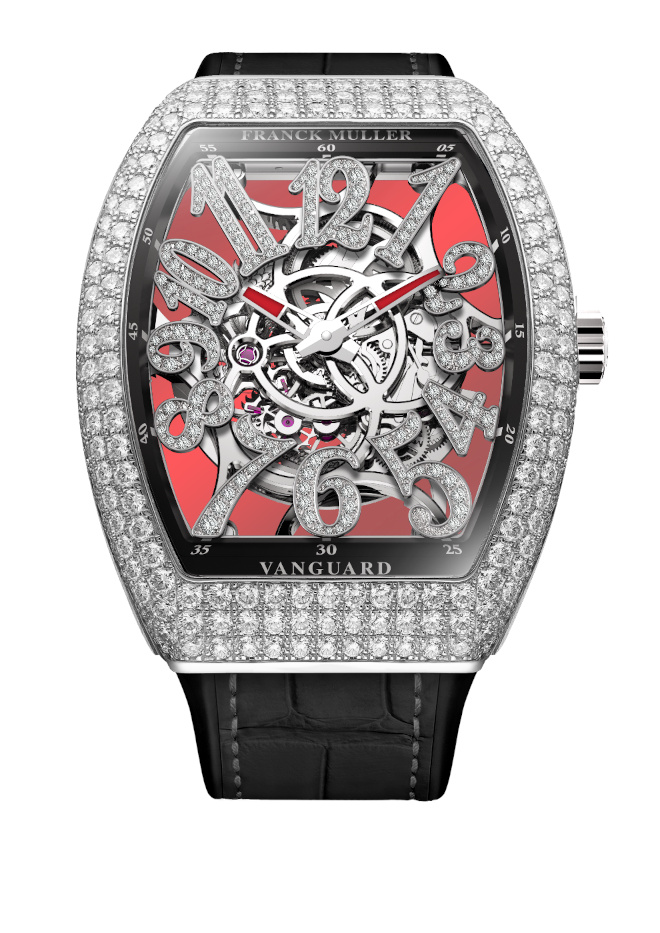
Franck Muller’s release of special edition timepieces comes every Lunar New Year to mark the procession of animals in the Chinese zodiac. Honouring the mythical dragon, the new Vanguard Dragon Slim Skeleton Limited Edition bears a customised rotor that has been engraved with a dragon, which appears to coil around and protect the timepieces’s movement like a “mystical guardian”. The Vanguard Dragon Slim Skeleton Rouge and Vert are accented in red and green respectively, with the pops of color coming from its tinted sapphire caseback – the special bright hues reflected in said caseback mirror that of the dial. Only 10 pieces will be available of each reference, including the Colour Dreams version (which is distinguished by a transparent caseback) exclusively at Franck Muller boutiques in the Asia Pacific region.
Parmigiani Fleurier

Maison Parmigiani celebrates the Year of the Wood Dragon with a magnificent restoration of a masterpiece from its Métiers d’Art collection, the “Tempus Fugit”. Inspired by the legend of the Dragon and the Pearl of Knowledge, the piece incorporates powerful symbols anchored deep in traditional Chinese culture. This piece is a reference to Parmigiani Fleurier’s vast experience in the restoration of antique clocks and its fascination with kinetic art.
L’Epée
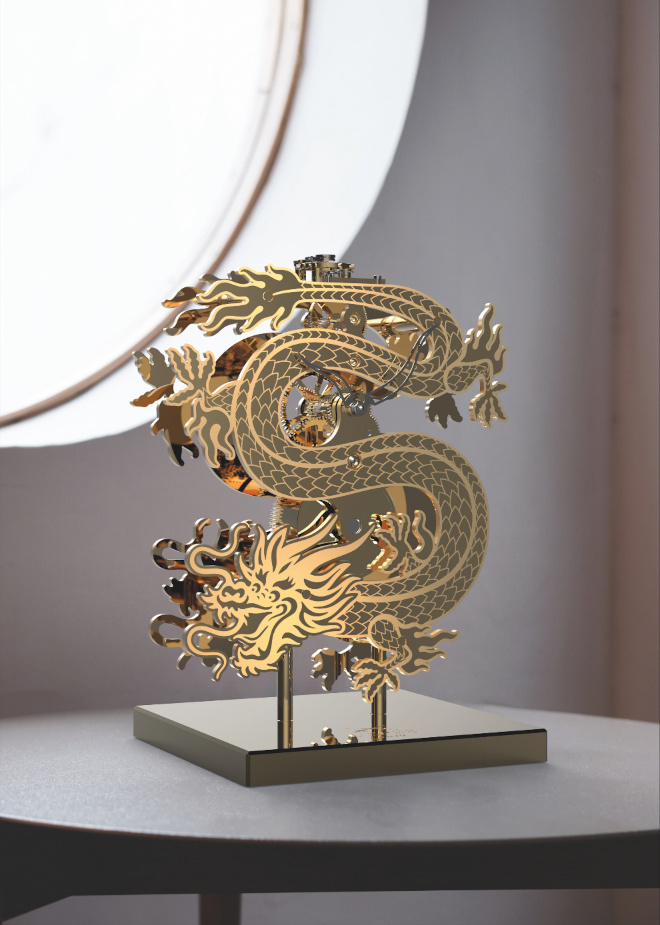
The movement “Swiss Made Caliber 1853” was created entirely by L’Epée 1839, has 124 parts meticulously assembled by the L’Epée 1839’s master watchmakers. Two dragons “protect” on either side of the most precious part of a kinetic object — the gearing mechanism. The dragons with golden or palladium scale adopt mirrored postures, their serpentine body coils protectively around the horological craftmanship.
For more on the latest in luxury watch releases, click here.
